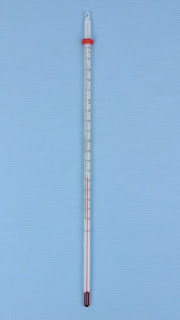Mercury laboratory thermometers, used in some science laboratory, requirer special safety precautions. Alcohol laboratory thermometers, despite of its less dangerous nature, should still be handled carefully to any damage.
Thermometer Safety
You have to twist gently the laboratory thermometer and press it firmly, but don't use brute force when inserting a laboratory thermometer to a rubber stopper. If you could, put a drop of glycerin or other lubricant to make the laboratory thermometer slide more easily.
Considerations
You have to hold your hand with distance of less than 1 inch from the stopper to avoid exerting torque on the thermometer.
Types
Laboratory thermometer safety depends on the type of laboratory thermometer: broken alcohol thermometers and other non-mercurylaboratory thermometers only needs the same cleanup as any other broken glass. A broken mercury thermometer requires special cleaning procedures.
Warning
High school and college students should never try to clean up a mercury spill from a broken mercury laboratory thermometer; instead, tell your laboratory instructor, turn off any heat sources. Trained department staff will come to clean up the spill.
Mercury Spill Cleanup
Personnel responsible for cleaning up a mercury spill, according to Princeton, should wear protective clothing, gloves and goggles, and use index cards to sweep the contaminated material into a sealable jar. Never use a vacuum cleaner or sink. Label the jar, and deliver it to a hazardous waste facility.



